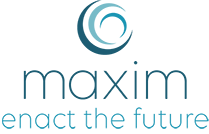|
|
HIGH IMPACT |
|
|
Change Lab |
|
| OBJECTIVE |
|
Achieve a successful change |
|
|
| BENEFITS |
|
Communicate clearly the change |
|
|
Understand and manage the forces (for and against) acting in the change |
|
|
Facilitate and support the implementation of change |
|
|
| PARTICIPANTS |
|
Managers (impacted by the change) in group |
|
|
| DURATION |
|
Smart Version - 6 half days (1 meeting a month) |
|
Extended Version - 6 days (1 meeting a month) |
|
|
|
| STEPS |
|
SMART |
EXTENDED |
|
| CHANGE SETTING |
|
Definition of development target for the Client |
 |
 |
|
Fostering management engagement and definition of individual development goals |
 |
 |
|
Defining Manager’s challenges related to change |
 |
 |
|
|
|
|
| LAB |
|
Group Coaching of real cases (i.e. reluctant co-worker) following a problem-solving process (in which each Manager is supported by his colleagues, facilitated by the Coach)
|
 |
 |
|
Experience of a selection of Maxim tools applied to specific development goals:
|
 |
 |
|
|
Force Field Analysis, checking the forces (for and against) |
|
|
acting in the change |
|
|
Change Readiness Matrix, mapping out the co-workers’ level |
|
|
of openness/resistance to change |
|
|
Onboarding Strategy, defining an engagement strategy for change |
|
|
Change Support, understanding how to support change |
|
|
Change Imprinting, embedding leanings and collect new practices |
|
|
|
|
Monitoring of progress after on the job implementation |
 |
 |
|
|
|
|
| RESULT CHECK |
|
Self-evaluation of results |
 |
 |
|
Embedding of lessons learned |
 |
 |
|
Checking results with the Client at mid- and end-of-program |
 |
 |
|
|
 Thanks to the fundamental support of Maxim, we transformed the processes and roles of the new organizational structure successfully
Thanks to the fundamental support of Maxim, we transformed the processes and roles of the new organizational structure successfully



 CHANGE LAB
CHANGE LAB


